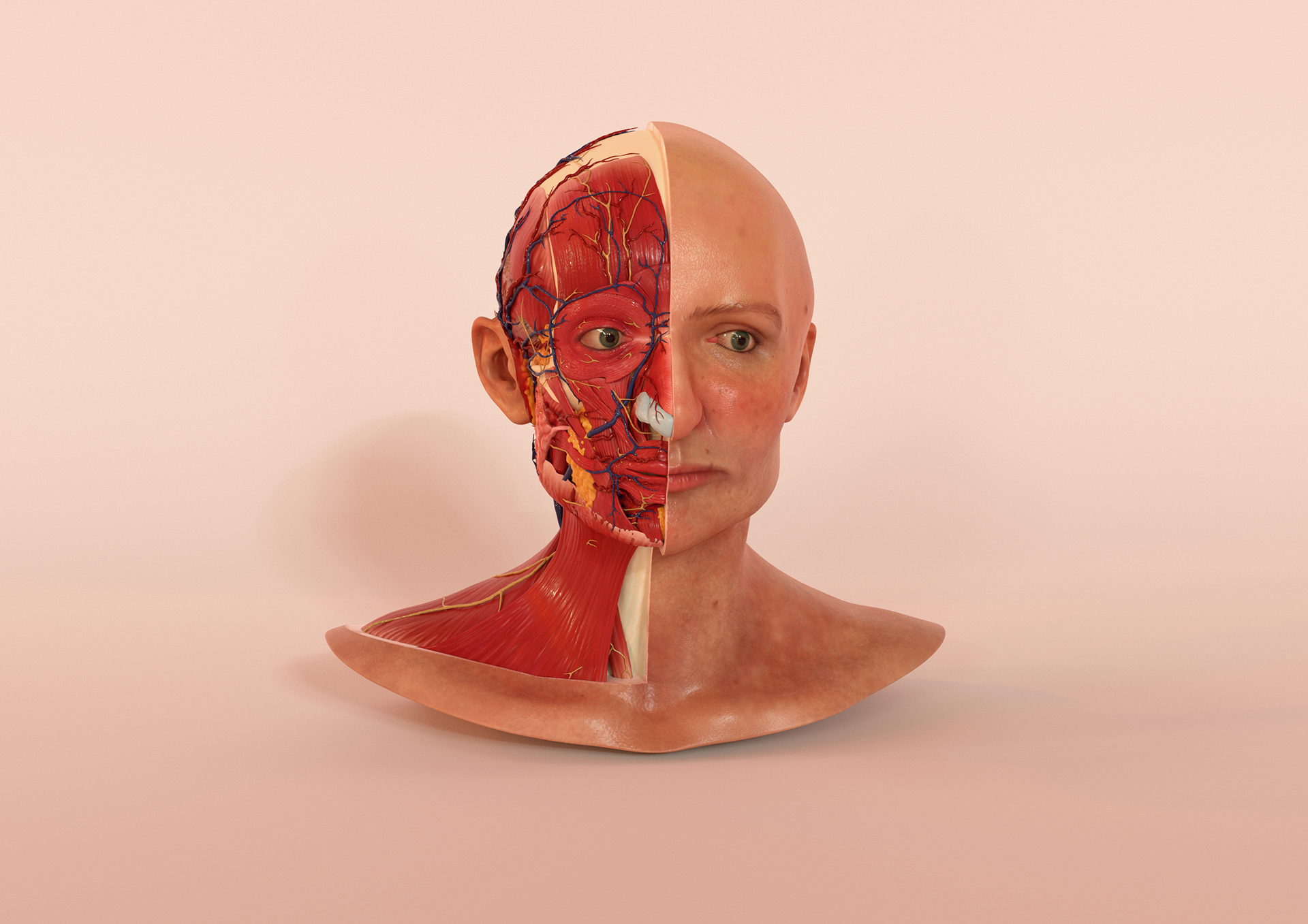To create this model, a skull made from CT data was downloaded from the NIH 3D Print Exchange. This was imported into ZBrush.
Tissue depth markers were added to cranial landmarks on the skull. A tissue depth data set was chosen based on morphological characteristics of the skull. This was used to give a suggestion of where the skin layer should be placed in relation to the skull. Facial features were also estimated based on the shape of the skull.
Facial muscles were then sculpted onto the skull and painted using polypaint in ZBrush.
A skin subtool was sculpted, keeping within the guidelines given by the tissue depth markers. Greater detail was added using alphas to give texture to the skin. Colour was then added to the skin, and realistic eyes added.
Once complete, the model was imported into Blender to render final images. Lighting, materials and shading were chosen for renders. The Cycles render engine was used to give more realistic looking renders.













